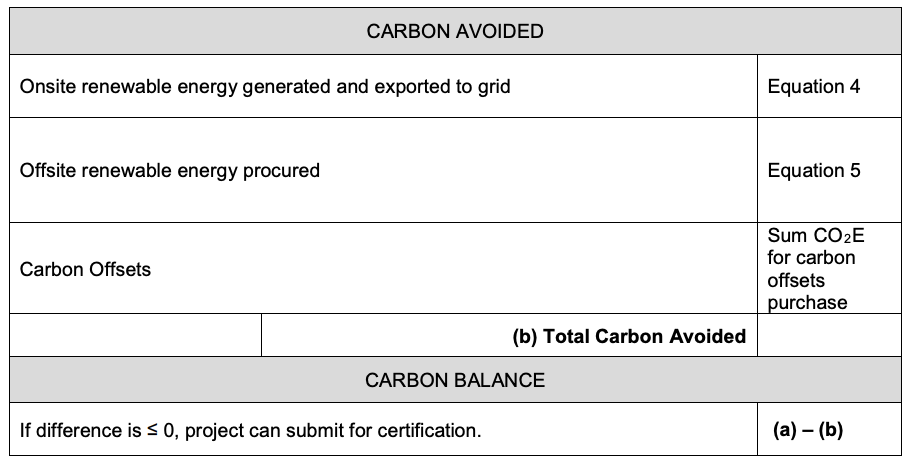LEED Zero Carbon Certification
Read Time 7 mins | Written by: Alex Bantock
The LEED Zero certifications, the newest additions to the LEED framework, are aimed at validating an existing building's achievement in reaching net zero goals. In a climate where global warming and environmental changes are becoming increasingly urgent, LEED Zero Carbon stands as an innovative addition to the LEED green building standards. However, a look at the carbon requirements to obtain LEED Zero Carbon certification prove that there is still a way to go.
For over twenty years, LEED (Leadership in Energy and Environmental Design) has served as a guiding framework for creating efficient, high-quality buildings and spaces, while also lessening greenhouse gas emissions through various approaches that affect areas such as land, energy, transportation, water, waste and materials.
Expanding on this foundational work, the United States Green Building Council (USGBC) has introduced LEED Zero, a complement of the traditional LEED program that specifically validates an existing building's achievement in reaching net zero goals. LEED Zero shines a spotlight on standout projects that excel in areas crucial for achieving a sustainable future. These projects can add to their existing LEED certification or LEED O+M registration by pursuing one or more specific LEED Zero certifications2.
The ultimate objective is straightforward: to embed sustainability into the very fabric of a building's lifecycle, rather than treating it as a supplementary feature or a last-minute consideration.
What is LEED?
LEED is a globally recognized framework initiated by the USGBC. For those wondering what is LEED, it serves as a comprehensive rating system for creating LEED certified buildings that are both eco-friendly and efficient1.
LEED is more than just a certification though; it is an ever-evolving transformative tool for architects and designers, providing a framework for sustainability across several facets of building design and operation. Whilst it is difficult to measure its efficacy in achieving its sustainability goals, its impact on the introduction of sustainable design and operation to the industry, especially in the U.S., cannot be overstated.
The LEED rating system uses a points-based methodology based on a detailed LEED checklist or LEED scorecard3. LEED certification levels - Certified, Silver, Gold, and Platinum - in turn reward sustainable practices in multiple categories like energy usage, water efficiency, and sustainable materials depending on how well they have scored1.
In its newest iteration, LEED v4.1, the framework emphasizes the importance of addressing both operational and embodied carbon emissions, highlighting features like life-cycle assessment and responsible sourcing of materials, despite not directly addressing these issues through quantitative requirements2.
LEED Zero, a new complementary level of achievement in green building, includes four additional areas of certification:
-
LEED Zero Carbon recognizes net zero carbon emissions from energy consumption through carbon emissions avoided or offset over a period of 12 months.
-
LEED Zero Energy recognizes a source energy use balance of zero over a period of 12 months.
-
LEED Zero Water recognizes a potable water use balance of zero over a period of 12 months.
-
LEED Zero Waste recognizes buildings that achieve GBCI’s TRUE certification at the Platinum level.
In a climate where global warming and environmental changes are becoming increasingly urgent, LEED Zero Carbon stands as an innovative addition to the LEED green building standards.
Lead Zero Carbon
LEED's evolution over the years has continually fine-tuned its emphasis on carbon reduction, with the LEED v4.1 update taking notable strides in this direction2. The introduction of the LEED Zero Carbon certification is a testament to this focused effort.
The LEED Zero Carbon certification currently provides a transparent accounting of the balance of carbon caused by energy consumption and occupant transportation to carbon emissions avoided or offset. To obtain LEED Zero Carbon certification, a project must achieve a carbon-dioxide equivalent (CO2e) balance of zero for the past year:
Carbon Balance = Total Carbon Emitted - Total Carbon Avoided
Carbon Emitted is calculated from delivered energy and occupant transportation, whilst Carbon Avoided includes on-site renewable energy generated and exported to the grid, off-site renewable energy procurement, and the purchase of carbon offsets. Renewable energy generated and used on-site reduces the amount of energy delivered and the environmental benefits of all renewable energy generation or procurement must be retained by the project4.
In essence, a building under this zero carbon certification produces no net greenhouse gas emissions, either by harnessing renewable energy sources or offsetting its carbon emissions4.
How does this work in practice? Buildings need to undergo rigorous documentation and verification processes, which include the meticulous tracking of energy use, renewable energy production, and the acquisition of carbon offsets. It is worth noting that this certification is versatile, applicable to both new constructions and existing buildings, and can seamlessly integrate with other LEED certifications, such as LEED Platinum or Gold4.
An overview of the Carbon Balance from the LEED Zero Program Guide: 

LEED Sustainability - Is it truly the gold standard?
The introduction of an individual certification dedicated to carbon is definitely a progressive move by the USGBC, but a look at the carbon requirements to obtain LEED Zero Carbon certification makes it apparent that there is still a way to go if LEED is to cover the scope of emissions necessary to affect real change.
LEED Zero Carbon's focus on the balance of carbon caused by energy consumption and occupant transportation to carbon emissions avoided or offset is of course inherently restrictive and misses key components that will drastically skew the balance, such as the embodied carbon of materials and carbon caused by water consumption and waste generation.
The USGBC has stated that they will expand to incorporate these sources of carbon emissions in the future, but with LEED moving beyond the United States and being adopted by thousands of projects around the world, we hope that these changes are implemented sooner rather than later.
Do you want to get ahead and easily measure the embodied carbon of your building?
The onus is ever more on industry leaders to pave the way, leading by example, and ensuring that the built environments of tomorrow are both sustainable and beneficial for all. LEED's stamp of approval on a growing number of impressive projects around the world is promising and we hope that industry stakeholders recognise not only the benefits of such certification systems, but also their limitations, and use their knowledge and best practices to actively move beyond minimum requirements.
References:
2. LEED Zero Program Guide (USGBC)
3. How LEED v4.1 addresses embodied carbon (USGBC)
4. Understanding "LEED Zero Carbon" Certification for Sustainable Buildings (Rajkumar Pal)
Other Useful Resources:
We'd love to hear from you!

